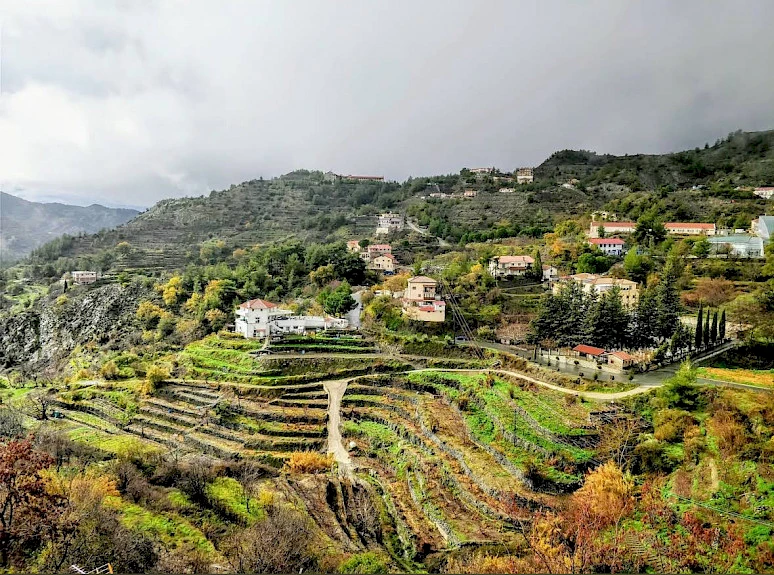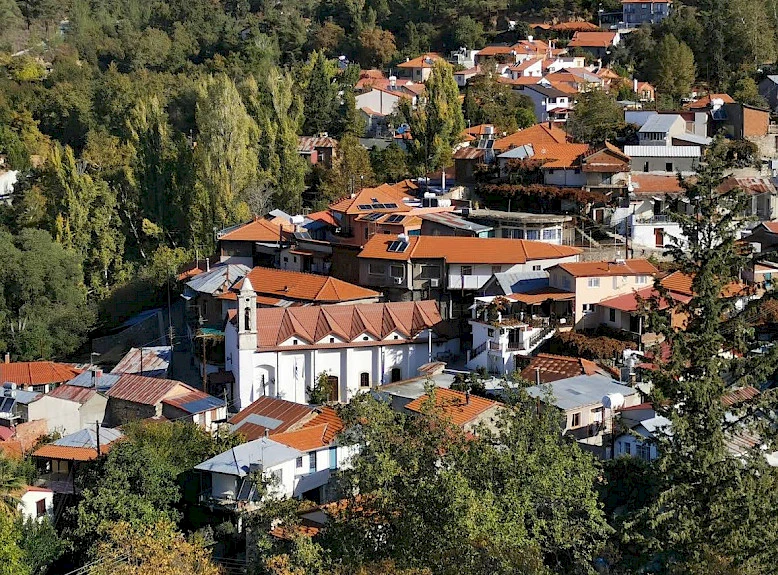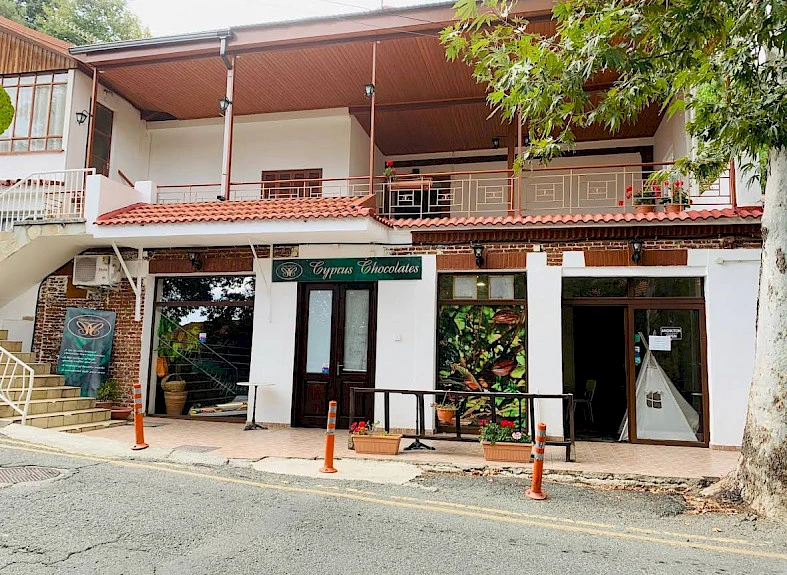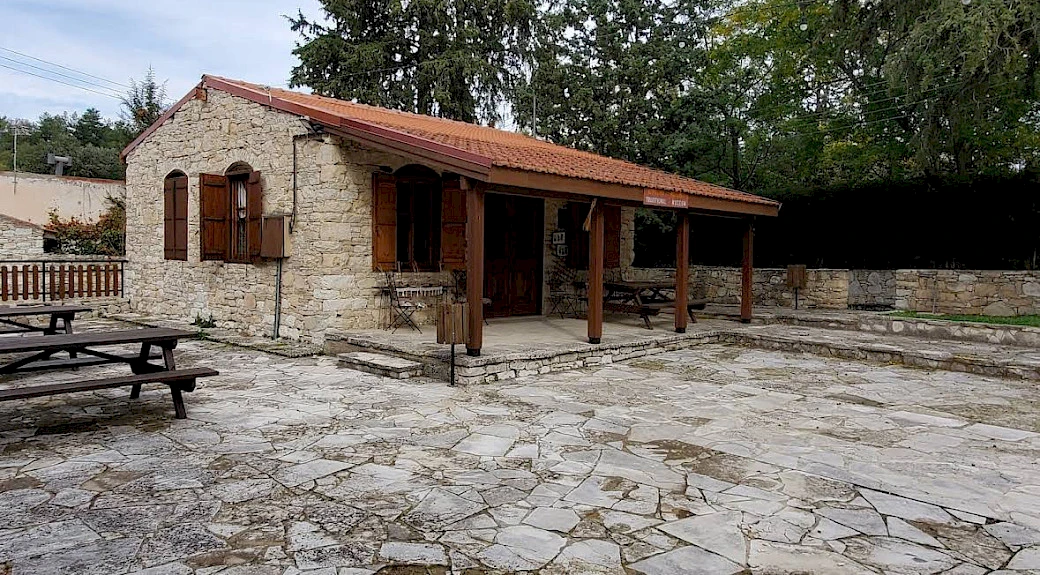Villages of craftsmen in the Troodos Mountains
- Moutoullas — a source of pure water and ancient traditions
- Foini — the potters' village
- Pedoulas — the kingdom of cherries
- Omodos — wine, lace, and glass
- Platres — the sweet side of Troodos
- Agros — the aroma of roses and artisanal secrets
- Silikou — the Kommendaria museum
- How to get there and what to see
Troodos Mountains — the heart of Cyprus, where life flows at its own pace. Their majestic slopes, the scent of pine, crisp air, and silence create a feeling that time moves more slowly here. Away from the noisy resorts, ancient villages hide, where the traditional Cypriot way of life and artisanal skills are still preserved and passed down through generations.

Despite modernity and tourism development, there are places in Troodos where everything is still made by hand — from wine and lace to ceramics and essential oils. These villages are a living reminder of old Cyprus, each with its own character, history, and craft.
Moutoullas — a source of pure water and ancient traditions
The village of Moutoullas is located on the northern slopes of the Troodos Mountains amid dense pine forests. It is known for its mineral springs, gushing straight from the ground and long considered healing. Moutoullas is one of the oldest settlements in the Marathasa region, mentioned even in Byzantine chronicles.
Here, you can see stone houses with wooden balconies and visit the Church of Saint Nicholas — one of the ten Troodos churches included in the UNESCO World Heritage list. After walking through the narrow streets, it’s worth trying the local honey and mineral water, bottled directly in the village.
Foini — the potters' village
Foini is known as the potters' village. Here, clay products are created from generation to generation — from simple pots to elegant decorative figures. Local artisans use the same techniques as hundreds of years ago, working in wood-fired kilns and decorating their creations with patterns and natural glazes.

It is home to the Pottery Museum, where you can see the entire process of making ceramics. Besides clay, the village is famous for its sweets — preserved fruits, "palomountzi" desserts, and aromatic Cypriot coffee.
Pedoulas — the kingdom of cherries
At an altitude of over 1100 meters, among the mountain valleys of Marathasa, lies Pedoulas. Its hallmark is the cherry. Locals grow the best varieties on the island and hold the Cherry Festival annually, attracting visitors from all over Cyprus.
Here, cherry liqueurs, jams, and sweets are produced, and you can also visit the Church of Archangel Michael — one of the ten UNESCO “painted churches”. Pedoulas unites taste, spirituality, and nature in one place.
Omodos — Wine, Lace and Glass
Omodos is a true gem of Troodos. Narrow cobbled streets, white stone houses, and cozy courtyards create an atmosphere of peace and warmth. Here they make Commandaria — the legendary Cypriot dessert wine known since the time of the Crusaders. In addition to winemaking, the village is known for crafts: glassblowing and handmade lace embroidery.

In the center of Omodos is the Monastery of the Holy Cross (Timios Stavros), which houses ancient relics. In numerous shops, you can watch artisans creating their works right before visitors’ eyes.
Platres — the Sweet Side of Troodos
Platres is the most famous mountain village of Cyprus, a favorite place for poets, artists, and travelers. Agatha Christie once visited here, and today tourists are attracted by green landscapes, waterfalls, and the cozy atmosphere.
Platres is home to the famous chocolate factory, where desserts are handmade with rose, citrus, and pomegranate flavors. This place combines gastronomy, nature, and leisure, allowing visitors to enjoy the mountain cool even in midsummer.

Agros — the Aroma of Roses and Craft Secrets
Agros is a village immersed in the scent of rose petals. Here they produce rose water, essential oils, and cosmetics based on the “Rosa damascena” variety. In spring, the Rose Festival takes place in Agros, where visitors can see the oil distillation process and participate in collecting petals.
Besides aromas, the village is famous for its smoked sausages and loukanika, prepared according to traditional recipes.
Silickou — the Commandaria Museum
Silickou is an old winemaking village where the famous Cypriot wine Commandaria is produced. Mentioned in Crusader chronicles, this drink is considered one of the oldest wines in the world.
In Silickou, the Commandaria Museum showcases amphorae, winemaking tools, and ancient recipes. Local families still produce wine using traditional methods, preserving centuries-old winemaking secrets.

How to Get There and What to See
The easiest way to reach the villages is by car — distances between them are short, but roads are winding. From Limassol to Omodos, bus No. 40 operates, and from Nicosia to Pedoulas and Moutoullas — No. 81. Public transport would take almost a day, so renting a car is better.
For those who want to stay longer, each village offers guesthouses and boutique hotels located in historic houses. In addition to craft villages, it is worth visiting painted churches — UNESCO World Heritage Sites — as well as the Caledonia and Milomeris waterfalls. Every turn of the mountain roads opens a new story.
